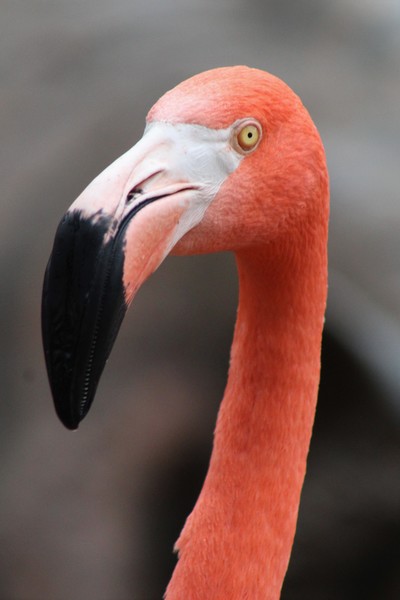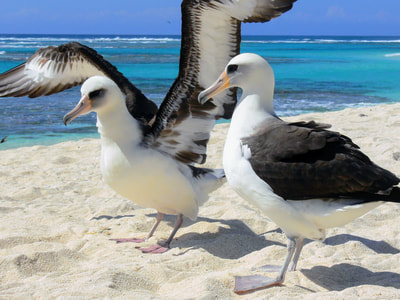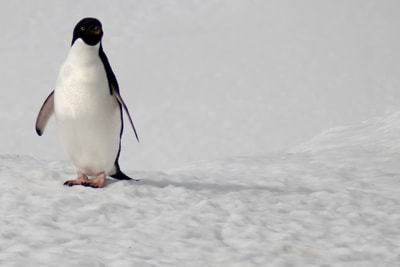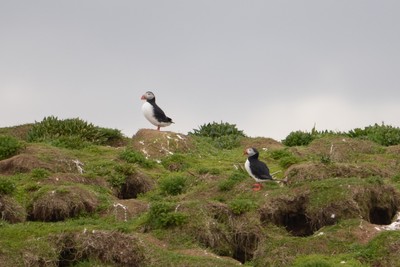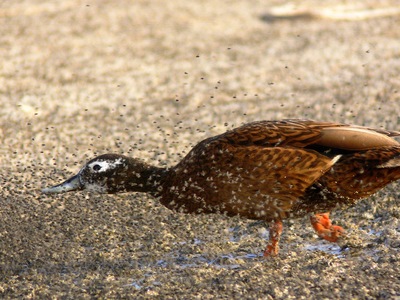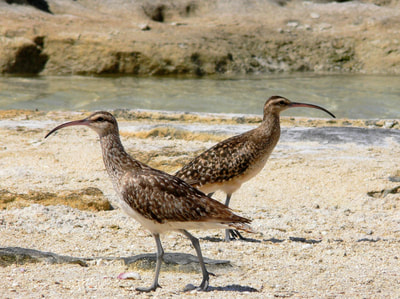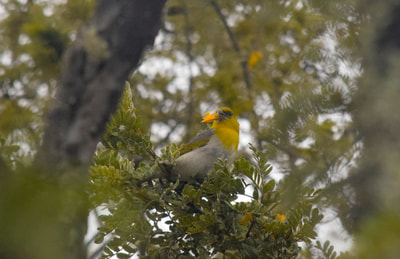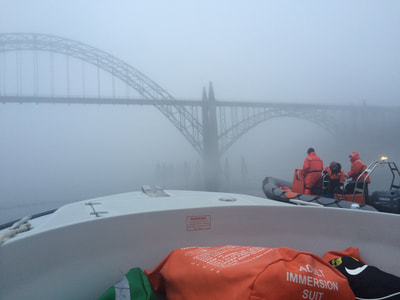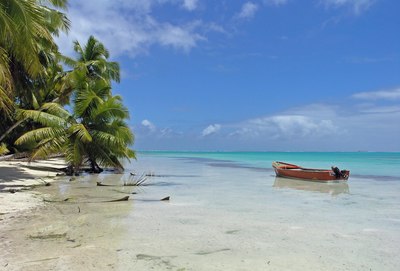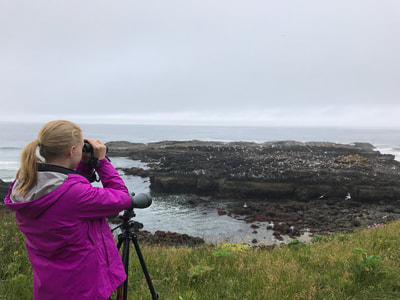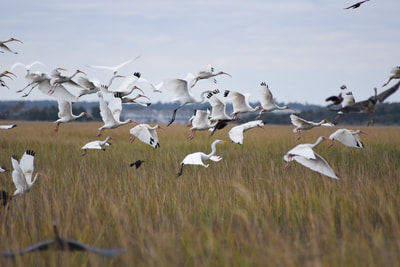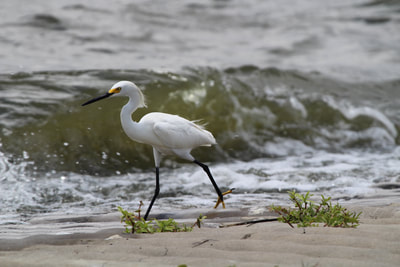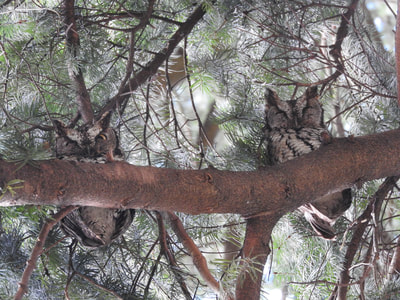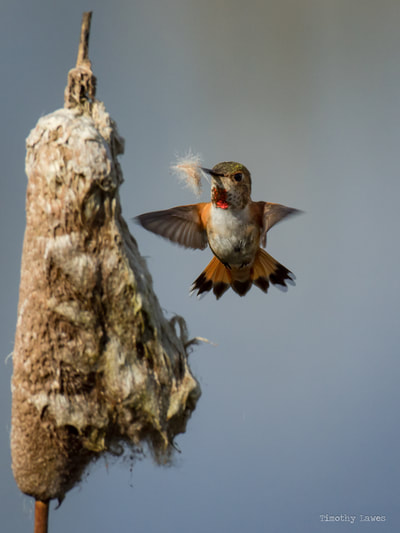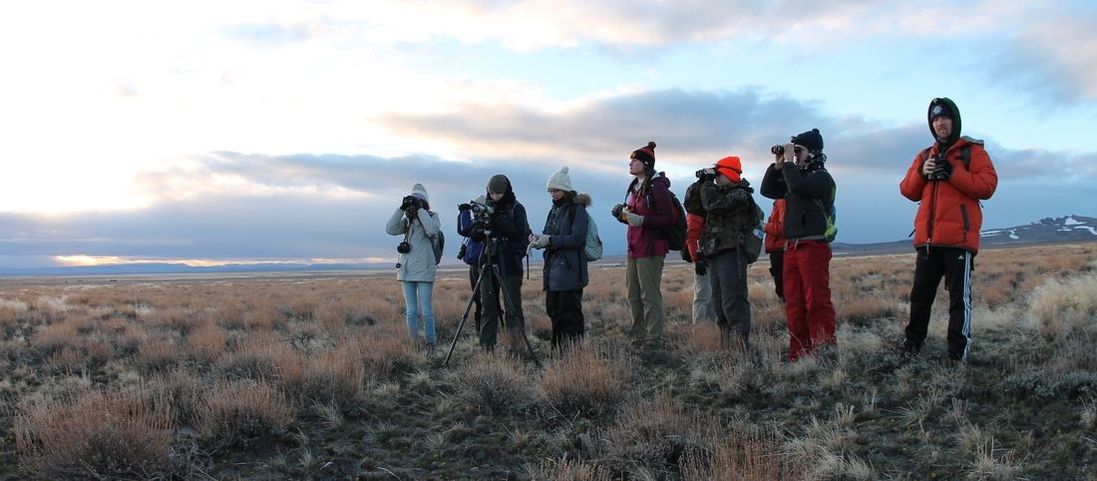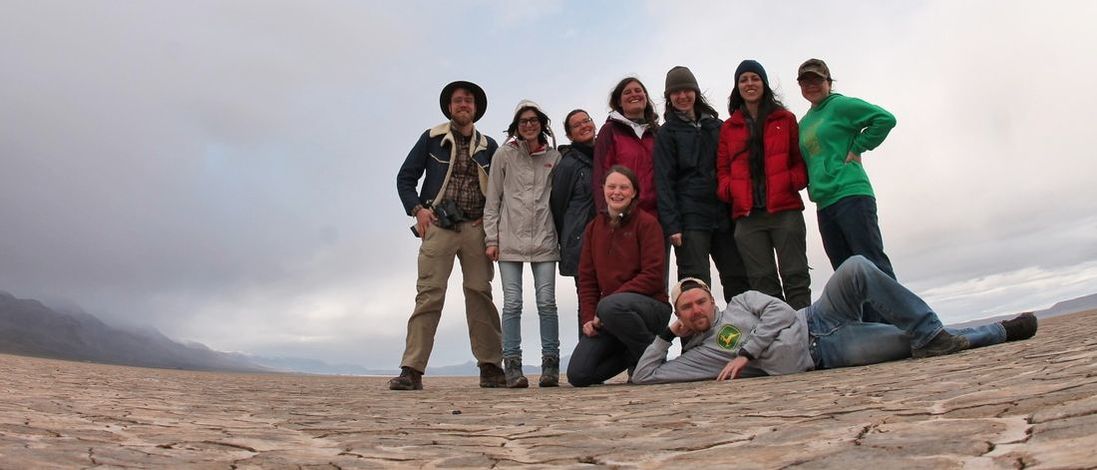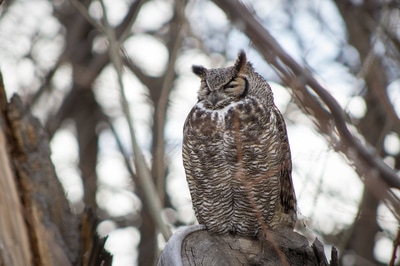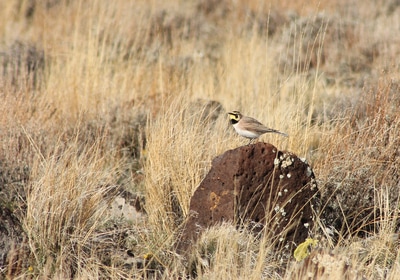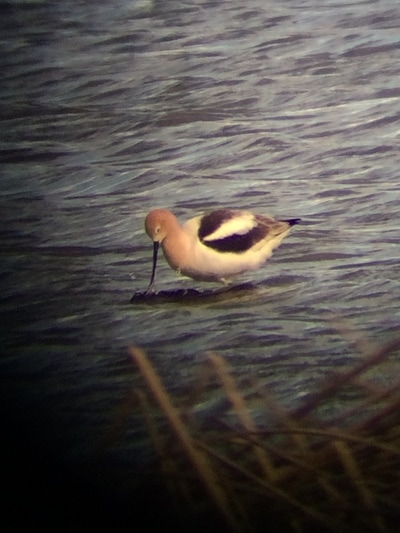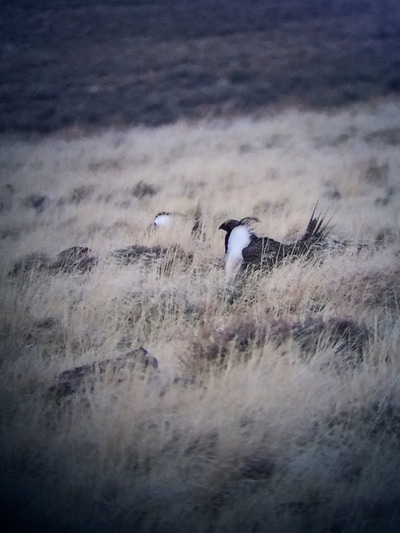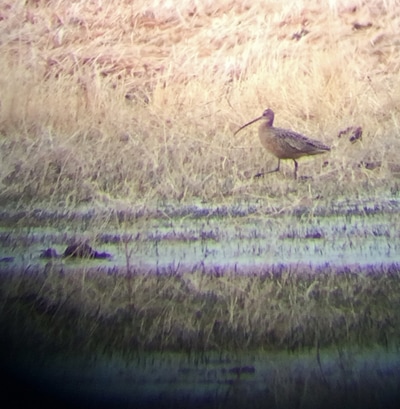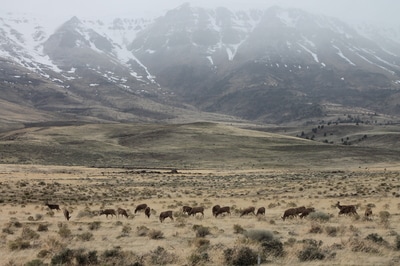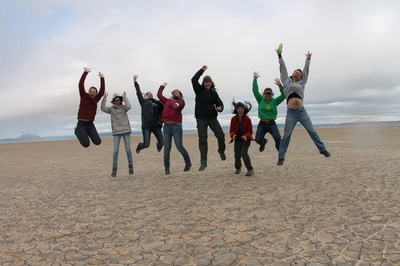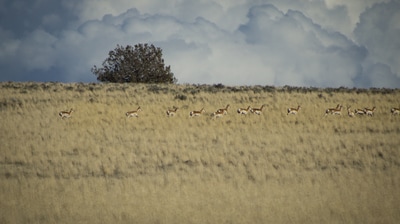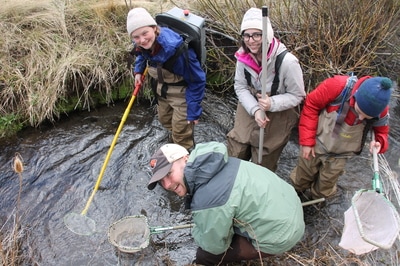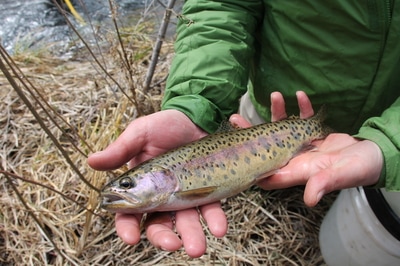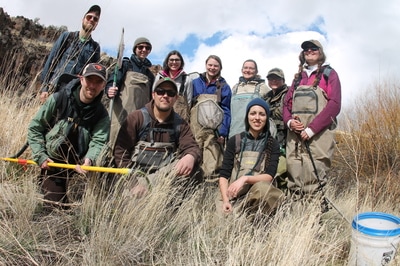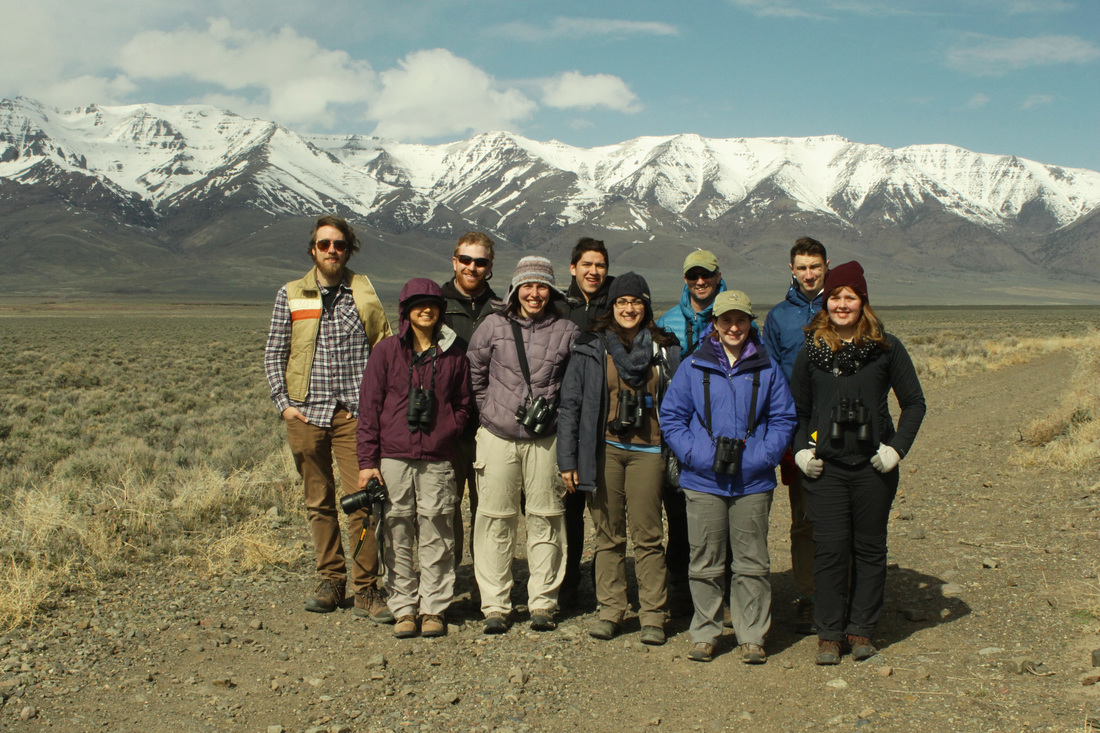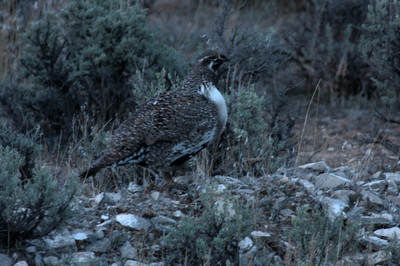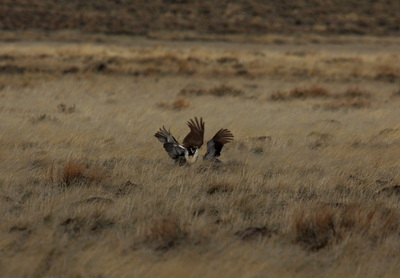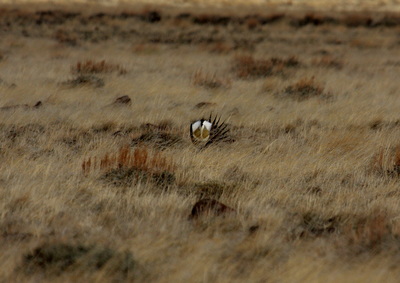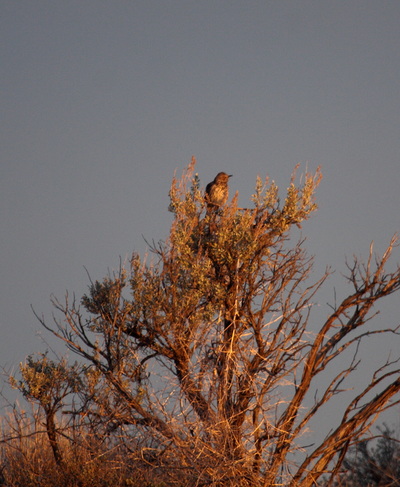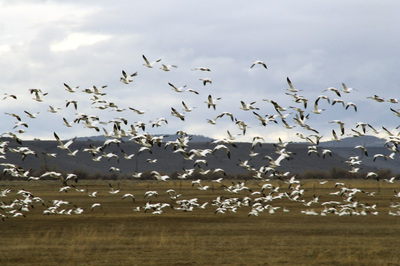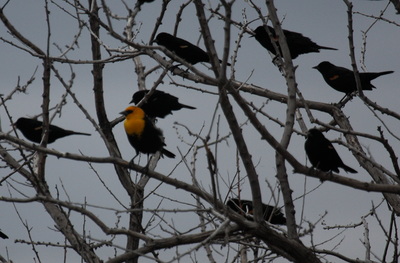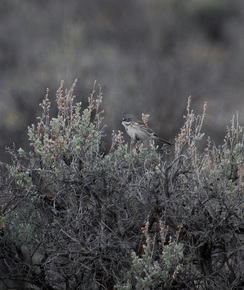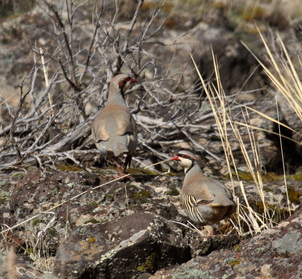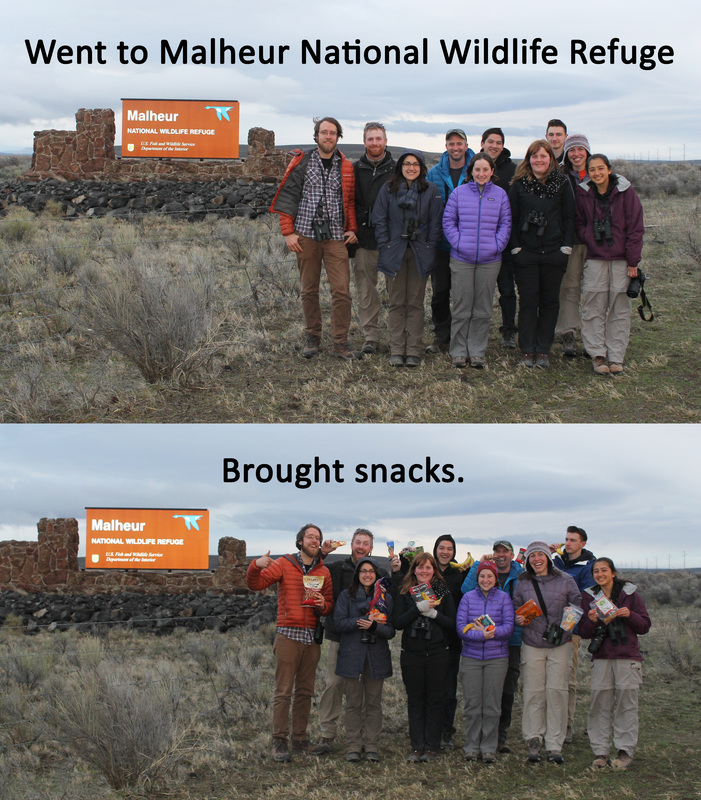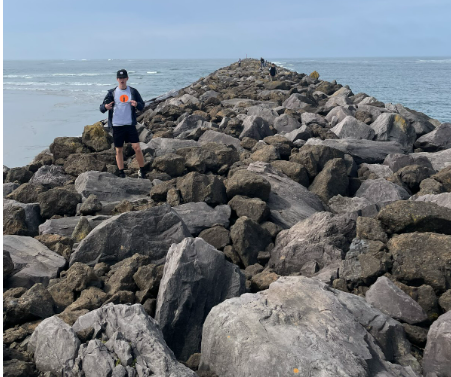 The coast did not disappoint! After searching diverse habitats in Newport and nearby areas, we are pleased to share that we recorded 83 bird species! Beginning our day at Beaver Creek State Natural Area, we meandered our way on foot through coast forest and blooming skunk cabbage to Beaver Creek Marsh. This stop produced many beautiful passerines such as Purple Finch and Townsend’s Warbler, waterfowl like Wood Duck, and even a Barred Owl! We then made our way north to the South Jetty at the mouth of the Yaquina River in Newport. As the mist cleared, we spotted three cormorant species, an Iceland gull, Harlequin Ducks, Surfbirds, and Snowy Plovers. From there, we headed even farther north to our “Seawatch” spot at Boiler Bay State Scenic Viewpoint, where we had Caspian Terns, White-winged Scoters, and Black Oystercatchers. As the tide came in, we searched the mudflats of Yaquina Bay from the Hatfield Marine Science Center for shorebirds. We Saw Short-billed Dowitcher, Black-bellied Plover, Western Sandpiper, and Dunlin.
OSU BN Spring trip to Northern CA: exploring partnerships in avian conservation and research4/19/2018 On March 23rd, 2018, nine student members of the OSU Bird Nerds Club departed OSU for Point Reyes National Seashore in Northern California. We spent the first evening setting up camp and then enjoyed a mist-netting presentation by Mark Dettling and Point Blue interns at the Palomarin Field Station the next morning. The afternoon was filled with birding and exploring different parts of the National Seashore. The following morning, we left camp early and headed towards the Yolo Bypass Wildlife Area near Sacramento. We stopped at the Benicia State Recreational Area to search for the elusive Black Rail. After a short walk around the marsh, we were rewarded with a "kic-kic-kerr, kic-kic-kerr" call announcing there was indeed a Black Rail hiding in the reeds somewhere trying very hard not to be seen.
At the Yolo Bypass Wildlife Area, Robin Kulakow and Marge Kolar gave us a wonderful presentation about the Yolo Basin Wildlife foundation as well as the interesting management history of the area. We spent the rest of the afternoon birding with them at the wildlife area, seeing many species of birds including American Avocet, Black-necked Stilt, Snow Geese, and a very bold little Sora that we were able to get some great looks at. We also heard (but did not see) some Yellow-Billed Magpies. The next morning, we packed up camp and headed to Colusa for a presentation at Davis Ranches. On the way, we stopped at several spots to bird, and finally saw the elusive Yellow-billed Magpies we were searching for! We also saw a Phainopepla basking in the sun, another one of our target species for the trip. At Davis Ranches, Khara Strum, Kristin Sesser, and Emily James gave us a great presentation about how Audubon California, Point Blue Conservation Science, and Davis Ranches (a private, operating ranch) work together to provide habitat year-round for resident and migratory birds. Afterwards, we took a tour of the Ranch to learn about all of the innovative farming practices taking place there. We were also treated to a special tour of the historic Davis house, which in addition to being beautiful was said to be haunted! Before checking into our lodging in Colusa, we did one last birding trip to the Colusa National Wildlife Refuge. The autotour provided great looks at many species of waterfowl, as well as the only Common Gallinule of the trip. As we continued along the route, someone mentioned how strange it seemed that we had not seen a single Black-crowned Night-Heron the whole trip. A little while later, we crossed a narrow bridge overlooking Freshwater Creek. To our amazement there were at least 150 Black-crowned Night-Herons roosting in the trees along the bank! The next morning we packed up and headed back to OSU. Overall, the trip was a huge success and the first time Bird Nerds had taken a trip out of state. We had amazing hosts everywhere we visited and learned a lot about partnerships in avian conservation and management. We would like to thank sincerely everyone who was a part of making this trip possible: Robin Kulakow and Marge Kolar (Yolo Bypass Wildlife Area), Khara Strum (Audubon California), Kristin Sesser (Point Blue Conservation Science) and Emily James (Davis Ranches & Robbins Rice Company, inc.), Mark Dettling and Diana Humple (Point Blue Conservation Science), Allison Kidder (Point Reyes Nat'l Seashore), Teri Engbring, and our faculty advisor Sue Haig. - Mamo Waianuhea President 2017/2018 Oregon State University Bird Nerds A very big thank you for all of the people that participated in our photography contest, as well as the many that voted for their favorites! Here are the winners and honorable mentions for each category, hover over an image to see the caption. You can view all of the entries for the photography contest, along with their captions on our Facebook page "The Bird Nerds Club at Oregon State University". OSU Bird Nerds / OSU Fish & Wildlife Club Collaborative Spring Field Trip: March 23 - 28, 20175/24/2017 From March 23-28, 2017, 9 student members of the OSU Bird Nerds and Fisheries and OSU Wildlife Club took part in this six-day field trip to Hart Mountain National Antelope Refuge, Malheur National Wildlife Refuge, and the surrounding region. It was made possible thanks to a generous grant from the Oregon Chapter of the Wildlife Society. OSU Bird Nerds and OSU Fisheries and Wildlife Club sincerely thanks this wonderful organization for their support of our students. We would also like to thank Laurel Kullerud and Jeff Mackay of the US Fish and Wildlife Service, Oregon Dept. of Fish and Wildlife Fisheries Biologist, Ben Ramirez, the Board of Directors of the Friends of Hart Mountain, and Duncan Evered and Lyla Messick of Malheur Field Station for their hospitality, great information, training, and support. This was the first time the majority of the students on this trip had experienced Hart Mountain and Malheur NWRs and the surrounding region. Students monitored Greater Sage-Grouse leks on Hart Mountain National Antelope Refuge for USFWS along with volunteers from the Board of Directors of the Friends of Hart Mountain. Upon leaving Hart Mountain, student participated in an electrofishing workshop in Bridge Creek on Malheur National Wildlife Refuge with ODFW Assistant District Fisheries Biologist, Ben Ramirez. Students also practiced techniques for identifying bird species by song, visual ID, and call. Students also observed many other wildlife species in the region, including Pronghorn, Mule Deer, and many small mammals. In addition we spent time discussing and exploring the history, geography, and geology of the Northern Great Basin and southeastern Oregon. The trip was a tremendous success with a great crew of students. - J. A. Laney Vice President 2016/2017 Oregon State University Bird Nerds Photo GalleryStudent Reflective StatementThe Hart Mountain/Malheur National Refuge trip during the Spring Break of 2017 was an amazing experience. Not only did I discover a totally unknown part of Oregon – which is incredibly beautiful – but I also learned a lot. It was a great opportunity to get hands-on experience on field research. Monitoring Greater Sage-Grouse was fun and a completely brand-new type of bird survey for me. Seeing them in their natural habitats displaying their special behaviors was surprising. I felt very privileged to be able to witness that. Southeastern Oregon is wild and very few people are there which was really nice as I felt completely surrounded by Nature. It was also very exciting to learn about Redband Trout and to try electrofishing. It’s not often we get this kind of opportunity! I am very thankful to everyone who participated in making this trip possible and to everyone who came along for making it such a fun adventure!
- Marie-Morgane Rouyer, Université de Poitiers / Oregon State University 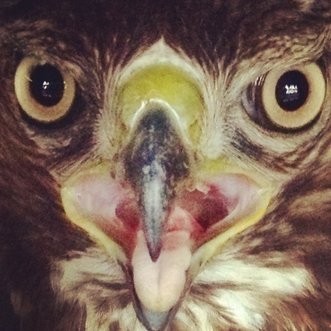 Red-tailed Hawk, image: J.A. Laney Red-tailed Hawk, image: J.A. Laney OSU Bird Nerds have won the 2017 David L. Adams Apple Award for Best Radio Promo, coming in first place thanks to the help of KBVR-FM. The radio promo can be heard below and features OSU Bird Nerds President Noelle Moen advertising the club. The David L. Adams Apple Award is given to the “Best of Show” for different categories of college media. The awards are handed out at the annual College Media Association Conference held in New York City. The newest Bird Nerd recruit, Donald Orr, traveled all the way to New York City to accept the award on behalf of the Bird Nerds. OSU cleaned up the competition by taking five additional Apple Awards, four being in first place. Best Magazine Spread – Beaver’s Digest, Best Newspaper (4 year, more than 10,000) – The Daily Barometer, Best News Delivery, Best Tweet – The Daily Barometer, and third place Best Facebook Page – The Daily Barometer. You can view all the winners here. The OSU Bird Nerds would like to thank the College Media Association, KBVR-FM for their help creating and publishing the radio promo, and Donald Orr for being a dedicated Bird Nerd! Download the mp3 to listen to the winning promo!
On Sunday April 17, 2016, six bird nerds spent the morning hours at Bald Hill Natural Area in Corvallis, OR. A total of 50 species were detected during our 4 1/2 hours bird walk including early spring arrivals such as House Wren, Cassin's Vireo, Black-throated Gray Warbler, Common Yellowthroat, Vesper Sparrow, and Chipping Sparrow to name a few. All in all, this was a successful half-day of birding in spectacular sunny spring weather. Photo GalleryTotal Numbers for Species DetectedeBird checklist: http://ebird.org/ebird/pnw/view/checklist?subID=S29015355
Mallard (Anas platyrhynchos) - 2 Wild Turkey (Meleagris gallopavo) - 3 Great Blue Heron (Ardea herodias) - 1 Turkey Vulture (Cathartes aura) - 6 Northern Harrier (Circus cyaneus) - 3 Cooper's Hawk (Accipiter cooperii) - 1 Band-tailed Pigeon (Patagioenas fasciata) - 3 Mourning Dove (Zenaida macroura) - 3 Anna's Hummingbird (Calypte anna) - 3 Rufous Hummingbird (Selasphorus rufus) - 2 Acorn Woodpecker (Melanerpes formicivorus) - 3 Downy Woodpecker (Picoides pubescens) - 2 Northern Flicker (Colaptes auratus) - 8 Cassin's Vireo (Vireo cassinii) - 1 Hutton's Vireo (Vireo huttoni) - 1 Steller's Jay (Cyanocitta stelleri) - 3 Western Scrub-Jay (Aphelocoma californica) - 10 American Crow (Corvus brachyrhynchos) - 2 Common Raven (Corvus corax) - 1 Tree Swallow (Tachycineta bicolor) - X Violet-green Swallow (Tachycineta thalassina) - X Barn Swallow (Hirundo rustica) - 2 Black-capped Chickadee (Poecile atricapillus) - 16 Bushtit (Psaltriparus minimus) - 4 Red-breasted Nuthatch (Sitta canadensis) - 3 White-breasted Nuthatch (Sitta carolinensis) - 2 Brown Creeper (Certhia americana) - 4 House Wren (Troglodytes aedon) - 2 Pacific Wren (Troglodytes pacificus) - 2 Bewick's Wren (Thryomanes bewickii) - 5 Golden-crowned Kinglet (Regulus satrapa) - 2 Ruby-crowned Kinglet (Regulus calendula) - 1 Wrentit (Chamaea fasciata) - 1 Western Bluebird (Sialia mexicana) - 8 American Robin (Turdus migratorius) - 7 Varied Thrush (Ixoreus naevius) - 1 European Starling (Sturnus vulgaris) - 7 Orange-crowned Warbler (Oreothlypis celata) - 19 Common Yellowthroat (Geothlypis trichas) - 7 Yellow-rumped Warbler (Setophaga coronata) - 1 Black-throated Gray Warbler (Setophaga nigrescens) - 3 Chipping Sparrow (Spizella passerina) - 1 Dark-eyed Junco (Junco hyemalis) - 4 White-crowned Sparrow (Zonotrichia leucophrys) - 4 Golden-crowned Sparrow (Zonotrichia atricapilla) - 5 Vesper Sparrow (Pooecetes gramineus) -2 Savannah Sparrow (Passerculus sandwichensis) - 5 Song Sparrow (Melospiza melodia) - 8 Spotted Towhee (Pipilo maculatus) - 11 Purple Finch (Haemorhous purpureus) - 7 From March 19-22, 2016, 8 student members of the OSU Bird Nerds and 2 Willamette University students took part in this four-day field trip to Malheur National Wildlife Refuge, Steens Mountain, Hart Mountain National Antelope Refuge, Chickahominy Reservoir, Silver Creek, Silvies Flood Plain, and the surrounding region. It was made possible thanks to a generous grant from the Oregon Birding Association’s Oregon Fund for Ornithology, as well as a generous grant from the Audubon Society of Corvallis. OSU Bird Nerds sincerely thanks both of these wonderful organizations for their support of our students. We would also like to thank Duncan and Caryn at Malheur Field Station for their hospitality and great information. What an amazing facility! This was the first time the majority of the students on this trip had experienced Malheur NWR and the surrounding region. Students conducted avian point count training and contributed to ongoing research in Oregon 2020 plots in the region. Students practiced techniques for identifying species by song, visual ID, and call, as well as recording field data. Students practiced identifying many previously unfamiliar species by field marks, flight patterns, and vocalizations. Many life birds were found during this trip and appreciations were founded for the places we visited and the species found within them. We observed a total of 101 species during these four days in March. Photo GalleryTrip ReportOur target bird for this trip was GREATER SAGE-GROUSE. We were unsuccessful in locating birds at the Foster Flat lek (save 2 flying birds briefly seen by one member). However we were successful at Hart Mountain National Antelope Refuge, where we observed a lone male displaying right on the roadway and later an active lek of 15 birds (males and females) just north of the road very near to the refuge headquarters. SNOW GOOSE / ROSS’S GOOSE – We saw flocks of many thousands of each species at the sewage pond in Burns, in agricultural fields between Burns and Malheur NWR, and near Malheur Lake. We observed 2 blue-morph ROSS’S GOOSE and 1 blue-morph SNOW GOOSE among one mixed flock. CHUKAR – We found 5 in rocky slopes along highways and in canyons. AMERICAN WHITE-PELICAN – 5 were found on the shore of Mann Lake and 3 more flying near the Alvord Desert on the east side of Steens Mountain. SWAINSON’S HAWK – One diagnostic individual was observed on a utility pole on Hwy 20 near Hampton, OR. FERRUGINOUS HAWK – We identified 5 in various locations throughout the region, 2 in association with nests. GOLDEN EAGLE – We identified 8 in various locations throughout the region, 2 in association with one nest (1 on the nest) just west of the Narrows. SANDHILL CRANE – We observed hundreds of birds distributed throughout the region at Silver Creek north of Chickahominy, in agricultural fields south of Burns, at Malheur NWR, and in the Warner Valley near Hart Lake. AMERICAN AVOCET – 10 were observed in the shallows at Rock Creek Reservoir on our way to Hart Mountain National Antelope Refuge. LONG-BILLED CURLEW – We found 3 vocalizing and flying at Silver Creek north of Chickahominy Reservoir. GREAT HORNED OWL – 2 were heard and seen on two of the nights during our stay at Malheur Field Station. SHORT-EARED OWL – 7 were observed hunting at dusk just south of Malheur Field Station along the central patrol road. PRAIRIE FALCON – We identified at least 3 flying among rocky slopes and in uplands in places like Pike Creek on the east side of Steens Mountain and near the Foster Flat lek. LOGGERHEAD SHRIKE – 3 were identified in various locations throughout the region. NORTHERN SHRIKE – 1 was well seen near the Foster Flat lek. SAGE THRASHER – 7 total individuals were either heard or seen throughout the region on both sides of Steens Mountain and at Hart Mountain. SAGEBRUSH SPARROW – 4 singing males were identified by auditory and visual means near the Foster Flat lek and 2 more were heard at Hart Mountain NAR. YELLOW-HEADED BLACKBIRD – 2 were at Malheur Field Station and 1 south of Burns among larger flocks of other blackbirds. Student Reflective StatementsWe asked our members to think about the value of public lands in their relationship to birds, scientific research, conservation, society, and human enjoyment when drafting these reflections. Taking these concepts into account, Bird Nerds members who participated in the field trip provided reflective statements about their personal experiences on this trip. When considering the differences between public and private lands, I can’t help but think of the etymologies of both words: “public” and “private”. The word private originates with the Land words privus and privatus; the first meaning single or individual, and the latter meaning “withdrawn”. Indeed, the word “private” often implies withdrawing away, secrecy, and concealment. Things on private lands are concealed from us, “off limits”. I found it very interesting that the origin of privatus lies in the similar word privare, which literally means “to separate and deprive”. When lands become private, it deprives everyone else of their benefit; it separates us as people. I do not mean to say that all land should be public, or that private land ownership is necessarily a bad thing. Private lands are in many ways just as important as public lands. However, private lands are, by nature, withdrawn away - forever a mystery. Who knows what we are missing, or have already lost? On the other hand, “public” literally means “of the people”. People implies a group of humans, a community, and a sense of togetherness. This land is “of the people”: it belongs to all of us. That is an incredibly strong and binding idea. Public lands are a burden and a right. They are an opportunity and a responsibility. The plants, animals, and resources within those lands do not belong to a sole individual (privus), as they would on private lands. They are the property of all of us. No one is deprived of their benefit. What does it mean, to own so much with our fellow man? Public lands teach us to share, to compromise, to communicate. We learn to acknowledge a myriad of rights and values. They provide us with new experiences, perspectives, and discoveries. Public lands stretch across habitats and borders. Through public lands, we all own things that we would never be able to otherwise afford. We can visit things we otherwise would not be able to see. Thanks to public lands, you and I own sagebrush, we own old growth, we own lava beds, and we own beaches. No matter who you are, because of public lands, you and I have something in common. Public lands bring us together. With public lands, we share something bigger than ourselves. - Jenna Curtis, Oregon State University This past week, a flock of bird nerds from OSU and a few stray migrants from WU congregated and flew to Malheur National Wildlife Refuge and the surrounding area to look for, you guessed it, birds. This trip, which resulted in at least 100 species sighted, took place mostly on public lands. We stayed at the Malheur field station, a ghost town of a former boys’ camp turned scientific research center. Probably the best sighting of the trip, a fifteen bird strong greater sage grouse lek, was in the Hart Mountain National Antelope Refuge. These public lands, among others we visited, function as a perfect gathering place for people inquisitive about the why and how of the natural world. The value of public lands is a convoluted, multilayered, highly politicized concept, but in my view they are most valuable as a place of learning. What lessons depends entirely on the visitor to these public lands. As a college student, most of my current learning happens in a classroom. But throughout my life, a lot of my learning has happened out of doors in my backyard and on public lands like national parks and state beaches. They are the ideal classroom for someone curious about animal behavior or plant ecology or fungi reproduction. The lands provide the lesson plan and the wildlife and the people you are with are the teachers. The main thing I took from this trip to Malheur (apart from how a gathering of greater sage grouse can be both awe-inspiring and hilarious) was a capacity for continued learning. And that in itself is value enough. - Jaime McConachie, Willamette University I was extremely fortunate to have been able to go on the OSU Bird Nerds Spring Break Trip to Eastern Oregon. The trip allowed me to interact with peers and graduate students, practice my birding skills, and took me to regions of Oregon that I had never explored before. I realized the beauty of Oregon’s sagebrush and high desert landscapes as well as the abundance of life they support. Throughout the trip, there seemed something amazing around every turn. The image of short-eared owls soaring against the sunset at Malhuer National Wildlife Refuge, the sight and sounds of sage grouse display at Hart Mountain National Antelope Refuge, and the vastness of the Alvord Desert are a few memories that I will never forget. Without access to public lands, these memories and many others would not have been made. This trip was especially important in light of the recent occupation of Malhuer NWR. That series of events showed me that public lands are in very real danger. What saved Malhuer was the local and national community that cares about it; without such strong support for the refuge, the occupation could have ended very differently. For other rural areas where support may be weak, the threat to public land is even greater. As the human population continues to grow, public lands will become increasingly important as refuges for flora, fauna, and humans alike. In current American media and culture, it can be easy to get trapped in a world of money, greed, entitlement, and everyday tasks. Personally, being in the outdoors has always had a way of changing my perspective, reminding me that I am part of something much bigger than myself. Just as nature has a special way of humbling, it can also encourage empathy and respect. These elements are crucial for balanced, healthy relationships from the family scale all the way up to the global community. When these characteristics are not fostered with individuals, they can easily give way to others that feed the type of behavior demonstrated at Malhuer last month. Public lands are places where everyone, regardless of socioeconomic class, age, gender, or race, has an opportunity to develop a deep appreciation for nature and holistic view of the world. I know that these shared areas have had a profound effect on my life and hope that others will continue to benefit from them for many generations to come. - Mamo Waianuhea, Oregon State University On our recent Spring Break trip the Oregon State University Bird Nerds club enjoyed access to BLM public lands such as Malheur Wildlife Refuge, the Hart Mountain National Antelope Refuge, and Chickahominy Reservoir, among many others. We found an amazing amount of diversity there in birds, mammals, plants, and landscapes. Part of our reason for choosing this area to bird in was to show our support and appreciation for public lands after the recent fiasco at Malheur. As Americans, the enjoyment of our public lands is part of our heritage. As human beings and part of the greater ecosystem, public lands are essential to our health and survival. Some people oppose the ownership of these lands by the government, but land without ownership ends up being abused by people who have no regard for preservation of the natural world. Without government intervention, native plants and wildlife would be destroyed through overgrazing, waste dumping, poisoning, overhunting, and unregulated deforestation. After witnessing first-hand the beauty and diversity of Eastern Oregon, and getting to see and learn about threatened and endangered species such as the Sage Grouse, I think we all went home with a little more respect for the importance of our public lands. Thanks to the Corvallis Audubon Society and the Oregon Birding Association for their generous grants that enabled us to take this trip, and thanks to the folks at Malheur Field station who let us stay in their facilities and took the time to educate us about Malheur’s history and ecology. - Azita Roshani, Oregon State University Total Numbers for Species DetectedHere is a total list of species and numbers. We kept eBird checklists at all of our stops and while we traveled.
Species Name 19-Mar 20-Mar 21-Mar 22-Mar Greater White-fronted Goose 9 15 -- -- Snow Goose 3 1,477 -- -- Ross's Goose -- 2,628 -- -- Canada Goose 318 90 73 11 Tundra Swan 6 3 28 6 Gadwall x 2 4 1 American Wigeon x 3 5 2 Mallard 24 129 145 48 Cinnamon Teal -- 9 -- -- Northern Shoveler x x 28 6 Northern Pintail 73 7 25 66 Green-winged Teal 2 4 2 13 Canvasback x 2 41 7 Redhead x 1 16 2 Ring-necked Duck x 11 27 11 Lesser Scaup x -- 13 31 Bufflehead 26 29 18 45 Common Goldeneye 2 14 14 -- Barrow's Goldeneye 3 -- -- -- Hooded Merganser x 2 -- -- Common Merganser 2 -- 14 18 Ruddy Duck x 2 7 67 California Quail -- -- 11 -- Chukar -- -- 3 2 Ring-necked Pheasant 5 2 2 -- Greater Sage-Grouse -- 2 -- 16 Pied-billed Grebe 3 1 1 -- Eared Grebe* -- -- -- 1 Western Grebe* -- -- -- 7 Double-crested Cormorant -- -- 2 -- American White Pelican -- -- 8 -- Great Blue Heron -- 1 -- -- Great Egret* -- -- -- 1 Turkey Vulture 8 2 2 5 Osprey* -- -- -- 1 Golden Eagle 5 3 1 -- Northern Harrier 11 10 5 4 Bald Eagle 11 2 1 6 Swainson's Hawk 1 -- -- -- Red-tailed Hawk 11 3 10 4 Rough-legged Hawk 13 6 -- -- Ferruginous Hawk 2 -- 1 2 American Coot 63 157 145 46 Sandhill Crane 191 69 2 -- American Avocet -- -- -- 10 Killdeer 34 12 5 5 Greater Yellowlegs -- 1 -- -- Long-billed Curlew 3 -- -- -- Wilson's Snipe 2 -- -- -- Ring-billed Gull 6 24 -- -- California Gull 5 58 22 -- Rock Pigeon 5 6 6 -- Eurasian Collared-Dove 8 39 -- -- Mourning Dove 3 -- -- -- Barn Owl 2 -- -- 2 Great Horned Owl -- 1 2 -- Short-eared Owl 7 -- -- -- Anna’s Hummingbird* -- -- -- 1 Belted Kingfisher -- 1 -- -- Downy Woodpecker -- 1 -- -- Northern Flicker 4 6 1 4 American Kestrel 2 1 4 -- Prairie Falcon 1 1 1 -- Peregrine Falcon -- -- -- 1 Say's Phoebe 3 1 5 -- Loggerhead Shrike 1 -- 2 -- Northern Shrike -- 1 -- -- Western Scrub-Jay -- -- -- -- Black-billed Magpie 31 23 7 -- American Crow 5 15 -- 1 Common Raven 86 14 53 9 Horned Lark 13 30 1 16 Tree Swallow 7 30 -- -- Violet-green Swallow -- -- -- x Northern Rough-Winged Swallow -- 3 -- Black-capped Chickadee* -- -- -- 2 Mountain Chickadee 2 -- 1 -- Bushtit -- -- 6 -- Pygmy Nuthatch -- -- -- 19 Brown Creeper -- 1 -- -- Marsh Wren -- 18 1 -- Golden-crowned Kinglet -- -- 1 -- Western Bluebird -- 2 -- 2 Mountain Bluebird 4 -- -- -- Townsend's Solitaire -- 2 2 2 American Robin 9 10 2 27 Sage Thrasher -- 3 3 1 European Starling 617 15 73 4 American Pipit 38 -- 2 -- Dark-eyed Junco 2 1 1 5 White-crowned Sparrow 1 -- -- 1 Sagebrush Sparrow -- 4 -- 2 Song Sparrow 9 27 1 2 Spotted Towhee 4 2 -- 2 Red-winged Blackbird 219 273 51 44 Western Meadowlark 4 24 45 13 Yellow-headed Blackbird -- 3 -- -- Brewer's Blackbird 1,468 8 8 -- Brown-headed Cowbird* -- -- -- 1 House Finch -- -- -- 1 House Sparrow 1 1 5 -- * Species observed on west side of Cascades (Linn County, Benton County) |
||||||||


